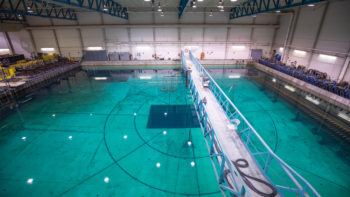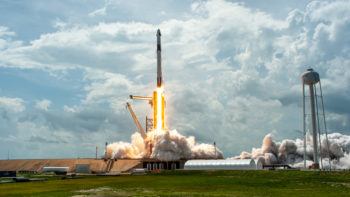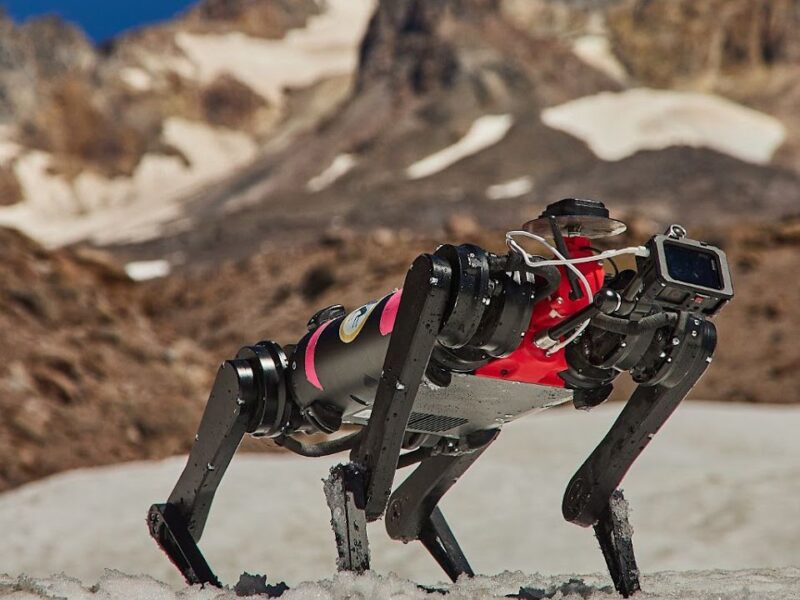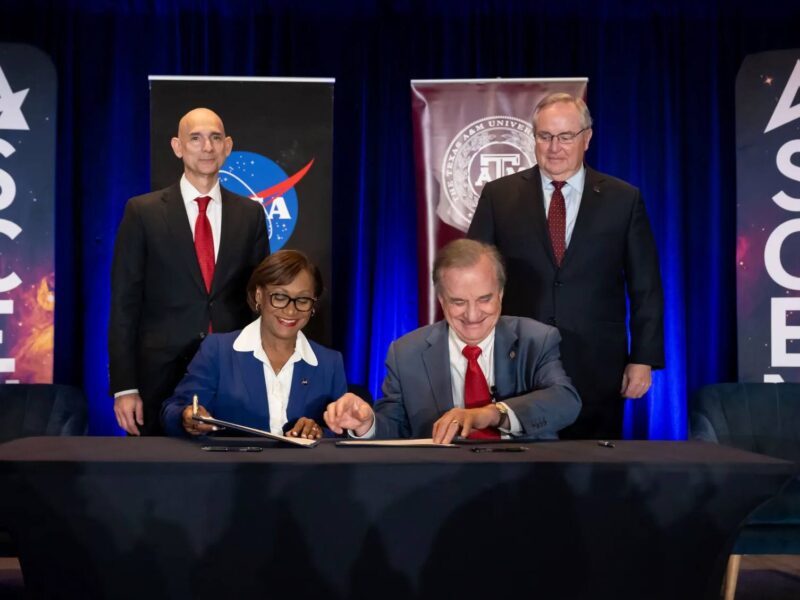Water Survival Equipment Tested By NASA At Texas A&M

In 2020, the world watched as SpaceX launched a two-man crew in a commercially built and operated spacecraft to the International Space Station. They then watched as they safely splashed down two months later. Long before the actual liftoff, however, researchers with NASA worked with staff from Texas A&M University to ensure the crew would land safely under emergency conditions.
Three years ago, a team from NASA worked out the design of the life raft that would have protected the crew in the event of an emergency in the Gulf of Mexico — the first water landing of NASA astronauts in 45 years — at a Texas A&M facility in College Station.
Cody Kelly ’10, an aerospace engineering graduate who currently serves as deputy for national affairs with the NASA Search and Rescue Mission Office, worked closely with the Offshore Technology Research Center (OTRC) staff to perform extensive and detailed testing.
“NASA used this testing to make an initial down-selection for the life raft design that became the NASA baseline for all human-rated spacecraft across all existing human spaceflight programs,” Kelly said. “The raft ops were the first look at rescue beacon integration into our spacesuits early in the design cycle.”
Located in Texas A&M’s Research Park, the OTRC is a graduated National Science Foundation (NSF) Engineering Research Center supporting the offshore oil and gas industry that conducts basic engineering research and develops systems for the economic and reliable recovery of hydrocarbons at ocean depths of 3,000 feet or more. It is jointly operated by Texas A&M, the Texas A&M Engineering Experiment Station and The University of Texas at Austin’s Cockrell School of Engineering.

“Additionally, we were able to test rescue beacon designs prior to manufacturing,” Kelly said. “Early testing provided the opportunity for efficient data sharing between the Orion Program and our commercial crew counterparts.”
Richard Mercier, professor in the Zachry Department of Civil and Environmental Engineering, has been director of the OTRC since 2001 and manages all wave basin projects and the research program.
“OTRC has conducted numerous projects for NASA and associated contractors (Boeing, United Space Alliance, Jacobs Engineering) since the facility opened in 1991,” he said. “Cody’s project was the fourth in a series that was executed between 2004 and 2017 having to do with testing of life preserver units, life rafts and miscellaneous vehicle egress equipment.”
The OTRC wave basin is capable of large-scale simulations of the effects of wind, waves and currents on fixed, floating and moored floating structures. The wave basin is 150 feet long and 100 feet wide with a depth of 19 feet. The pit located in the center of the basin has a depth of 55 feet. With 48 individually controlled paddles, the wavemaker can generate various wave conditions including unidirectional and multidirectional regular and irregular (random) waves. Sixteen dynamically controlled fans can generate prescribed gusty wind conditions from any direction. A modular current generation system consisting of banks of submerged jets can generate sheared current profiles.
NASA provided all equipment and test protocols for these projects, but the facility offered capabilities of producing wind and waves for prescribed sea states and also safety divers to assist NASA personnel in the water.
“Our staff and student workers are always eager to support and participate in these projects,” Mercier said.
NASA shared videos, photos and facility test data with their partners at SpaceX and Boeing to help engineers certify and fly the design following testing at OTRC.
Astronauts Robert Behnken and Douglas Hurley were on the SpaceX Crew Dragon spacecraft that took off into orbit from the Kennedy Space Center in Florida, with their landing fully protected by the life raft design that was decided upon in 2017 at the OTRC.
This article by Alyson Chapman originally appeared on the College of Engineering website.





